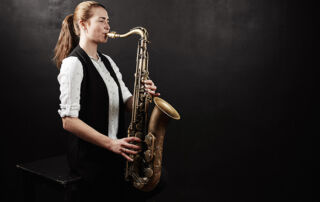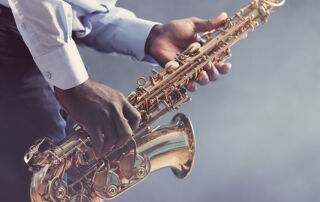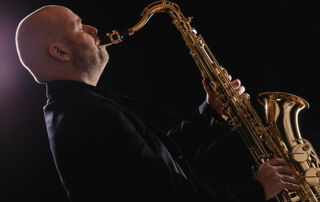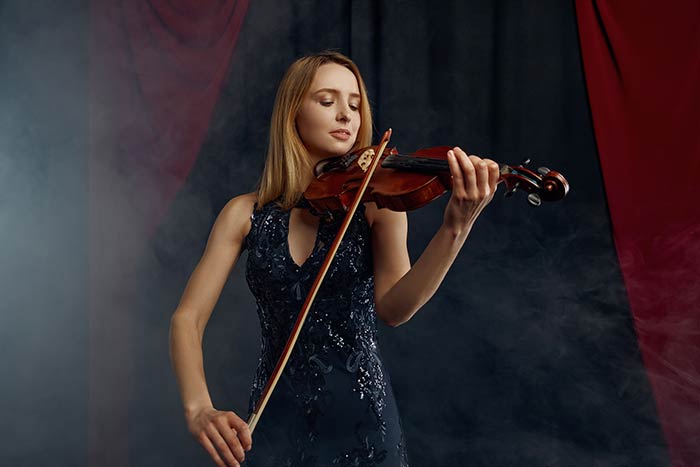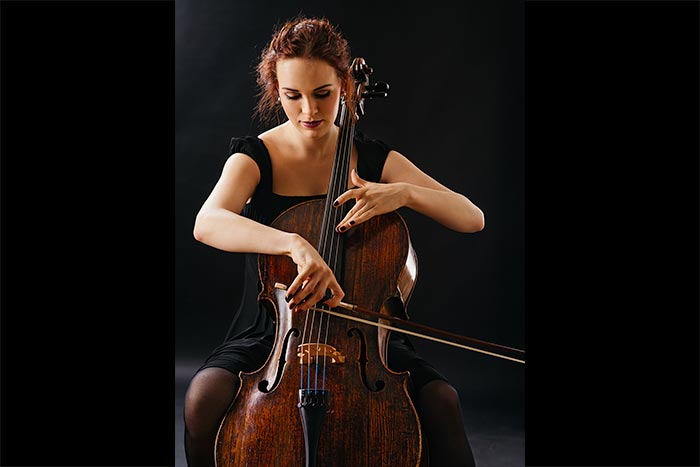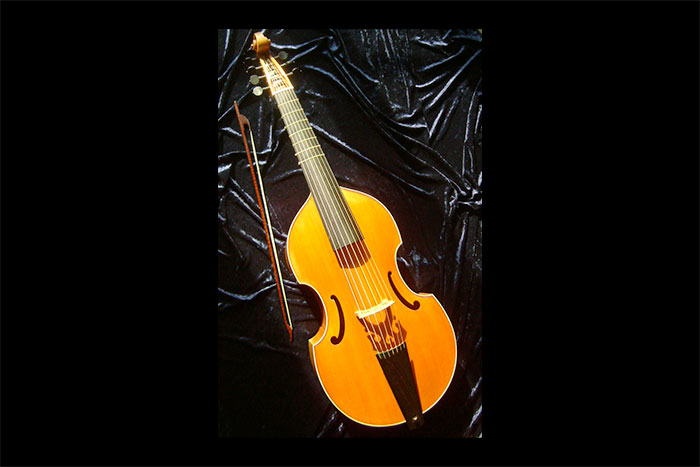The technical and historical aspects of the guitar are often overlooked by guitarists, yet I find it imperative to understand the theoretical foundations of the instrument one has decided to play. It is vital to grasp its mechanics and features at the point of purchase and for its long-term maintenance.
Let's discover the guitar together
The guitar is a string instrument played by plucking the strings with either the fingers or a pick, a small piece designed to vibrate the strings, held between the thumb and the forefinger.

There are two types of guitar: the acoustic guitar and the electric guitar.
The acoustic guitar does not use amplification; the sound is amplified by the instrument's soundbox, similar to a violin or cello, for example.

The electric guitar is amplified using pickups and amplifiers.
The guitar is constructed similarly to string quartet instruments (violin, viola, cello, and double bass) in three parts: the headstock, the neck, and the soundbox or body.

The headstock
This piece of wood is typically a direct extension of the neck, but it can also be glued to it and tilted backwards or straight, and it can be solid or hollow.
Its main functions are:
- Supporting the tuners, which, through the knobs or keys, allow the guitar strings to be tuned.
- It is a decorative element that varies depending on the type of guitar.
There are guitars without a headstock that have a tuning system at the bridge.
The tuners are small metal components that allow for the attachment of the strings.
There are several types of tuners:
- The recent automatic tuners.
- The locking tuners
- The oil bath tuners
- The open-gear tuners
The neck
The guitar has 6 to 10 strings, excluding the "12-string" guitar.
They are made of nylon on a classical guitar and of metal on an electric guitar.
It is divided into several sections by frets, which are small metal bars placed perpendicular to the neck axis. When you place your finger on the string, it presses against the fret. Therefore, the vibrating length of the string occurs between the bridge and the fret.
It is crucial that they are positioned precisely to avoid playing out of tune.
There are many types of frets with varying heights and thicknesses.
Caution!
They wear out, and you must regularly visit the luthier to eliminate the buzzing that your instrument may develop due to wear and to perform a refretting.
The soundbox or body
It is the most substantial part of the guitar. They are made of wood such as maple, rosewood, walnut, cedar, spruce, and mahogany... but there are electric guitars with a transparent Plexiglas body.
We will now separate the explanations regarding the soundbox into two types: acoustic guitars and electric guitars, as they differ.
For the acoustic guitar, there are several types:
- Folk guitar
- Flamenco guitar
- Gypsy guitar
- 12-string folk guitar

In the world of electric guitars, there are three families:
- The solid body (without a soundbox), solid body.
- The semi-hollow body
- The hollow body (with a soundbox).
As we have seen earlier in this article, guitars without a soundbox (solid body) are amplified using pickups placed under the strings.
Semi-hollow guitars are the intermediate option between solid-body and hollow-body guitars.
Hollow-body guitars already produce some sound without amplification, thanks to their semi-hollow body and sometimes the presence of soundholes on either side of the soundbox.
On the soundboard of an acoustic guitar, there is a rosette that allows the sound to be projected forward.
A bridge where the strings are attached, as well as the sides (the guitar's edges) which are used to connect the soundboard and the back of the guitar.
Guitar celebrities:
- Jimi Hendrix (left-handed guitarist)
- Eric Clapton
- George Harrison
- Jeff Beck
- Andrés Segovia
- John Williams
- Julian Bream
- Manuel Barrueco
Right-hand playing techniques:
The guitar has countless ways to be played with the right hand.
Do you know arpeggios, rest strokes (flamenco or picado), picking, strumming, rasgueado, golpe, alternate picking, alzapua, palm mute, slap, harmonics, tapping?

The guitar is a very ancient instrument, with the earliest records dating back to the 14th century. At that time, it had three double strings and a single string. The guitar likely has Spanish origins, where it was popular among the middle and lower classes of the aristocracy in the 16th century.
It became popular in other European countries in the 16th and 17th centuries.
A fifth string was added at the end of the 17th century, below the other four.
In the mid-18th century, the guitar reached its modern form, transitioning from a system of double strings to single strings, with the addition of a low sixth string.
In the 19th century, the body was widened, and wooden pegs were replaced with modern tuners.
The classical guitar is a descendant of the lute.
Its modern evolution began in Spain in the early 1800s, thanks to a carpenter named Antonio de Torres Jurado.
Christian Frederick Martin, a German luthier who emigrated to the United States, created a line of instruments that was the precursor to folk guitars.
This instrument was considered a tavern instrument that could not meet the requirements of classical music.

The guitar experienced an extraordinary surge in popularity in Northern Europe in the early 19th century before being overshadowed by the piano due to its low sound volume, which prevented it from being used in concerts.
The invention of the electric guitar around 1930 gave birth to a new instrument.
Fernando Sor, a Spanish guitarist and composer, has been dedicated to promoting the guitar for the past two centuries, and others like Andrés Segovia have brought the guitar the great popularity and respect it enjoys today.
The guitar is an instrument that can be played anywhere and with which you can reproduce many songs, so don't hesitate anymore, get started, and BEGIN NOW!
Click here to find out more about our guitar lessons in Paris.

